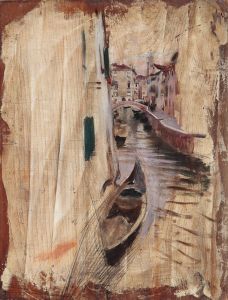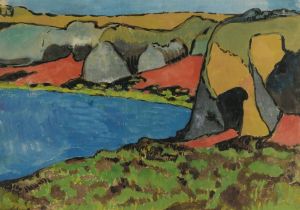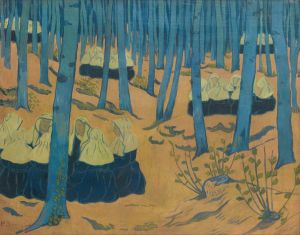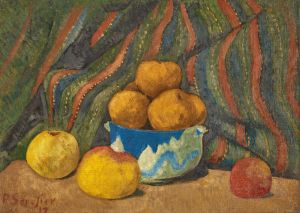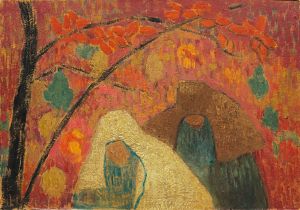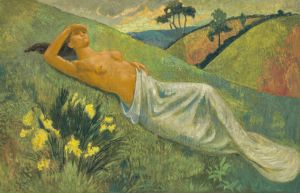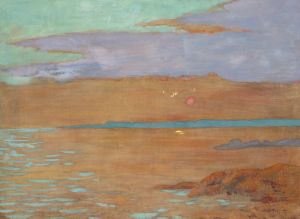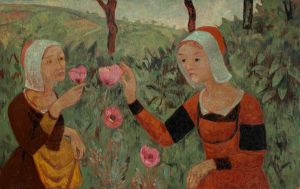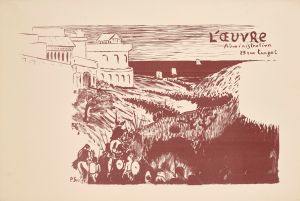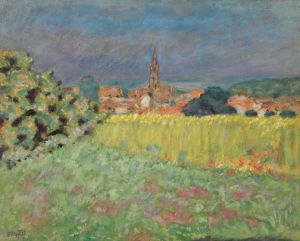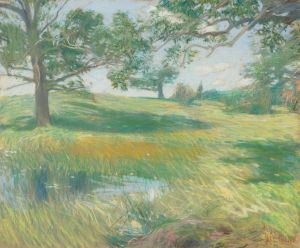
Pont-Aven, Le Pouldu
A hand-painted replica of Paul Sérusier’s masterpiece Pont-Aven, Le Pouldu, meticulously crafted by professional artists to capture the true essence of the original. Each piece is created with museum-quality canvas and rare mineral pigments, carefully painted by experienced artists with delicate brushstrokes and rich, layered colors to perfectly recreate the texture of the original artwork. Unlike machine-printed reproductions, this hand-painted version brings the painting to life, infused with the artist’s emotions and skill in every stroke. Whether for personal collection or home decoration, it instantly elevates the artistic atmosphere of any space.
Paul Sérusier's painting Pont-Aven, Le Pouldu is a work associated with the Post-Impressionist movement and the artist's involvement with the Pont-Aven School. Sérusier, a French painter, was a key figure in the development of the Nabis group, which sought to explore symbolic and decorative approaches to art. This painting reflects the influence of the Pont-Aven School, a group of artists who gathered in the small village of Pont-Aven in Brittany, France, during the late 19th century. The group was inspired by the area's natural beauty and the innovative techniques of Paul Gauguin, who encouraged a departure from naturalistic representation.
The title of the painting, Pont-Aven, Le Pouldu, references two locations in Brittany that were significant to Sérusier and other artists of the time. Pont-Aven was a hub for artists seeking inspiration in the rural landscape and traditional Breton culture, while Le Pouldu, a nearby coastal village, also became a retreat for painters. Both locations played a central role in the development of Sérusier's style and his exploration of bold colors and simplified forms.
Sérusier's work during this period was heavily influenced by Gauguin's teachings, particularly the use of the "synthetist" approach. This method emphasized the synthesis of the artist's emotional response, the subject matter, and the formal elements of the painting. Sérusier's use of flat planes of color and strong outlines in Pont-Aven, Le Pouldu reflects this approach, as well as the broader Symbolist movement's interest in conveying deeper meanings through visual abstraction.
The painting is notable for its departure from strict realism, instead focusing on the emotional and spiritual resonance of the landscape. Sérusier's choice of colors and composition demonstrates his commitment to creating a decorative and symbolic interpretation of the scene, rather than a literal depiction. This approach aligns with the goals of the Nabis group, who sought to integrate art into everyday life and emphasize its decorative potential.
While specific details about the creation and current location of Pont-Aven, Le Pouldu are not widely documented, the painting remains an important example of Sérusier's work and his contributions to the Post-Impressionist movement. It reflects the artistic experimentation and collaboration that characterized the Pont-Aven School and highlights the enduring influence of Gauguin's ideas on Sérusier and his contemporaries.





